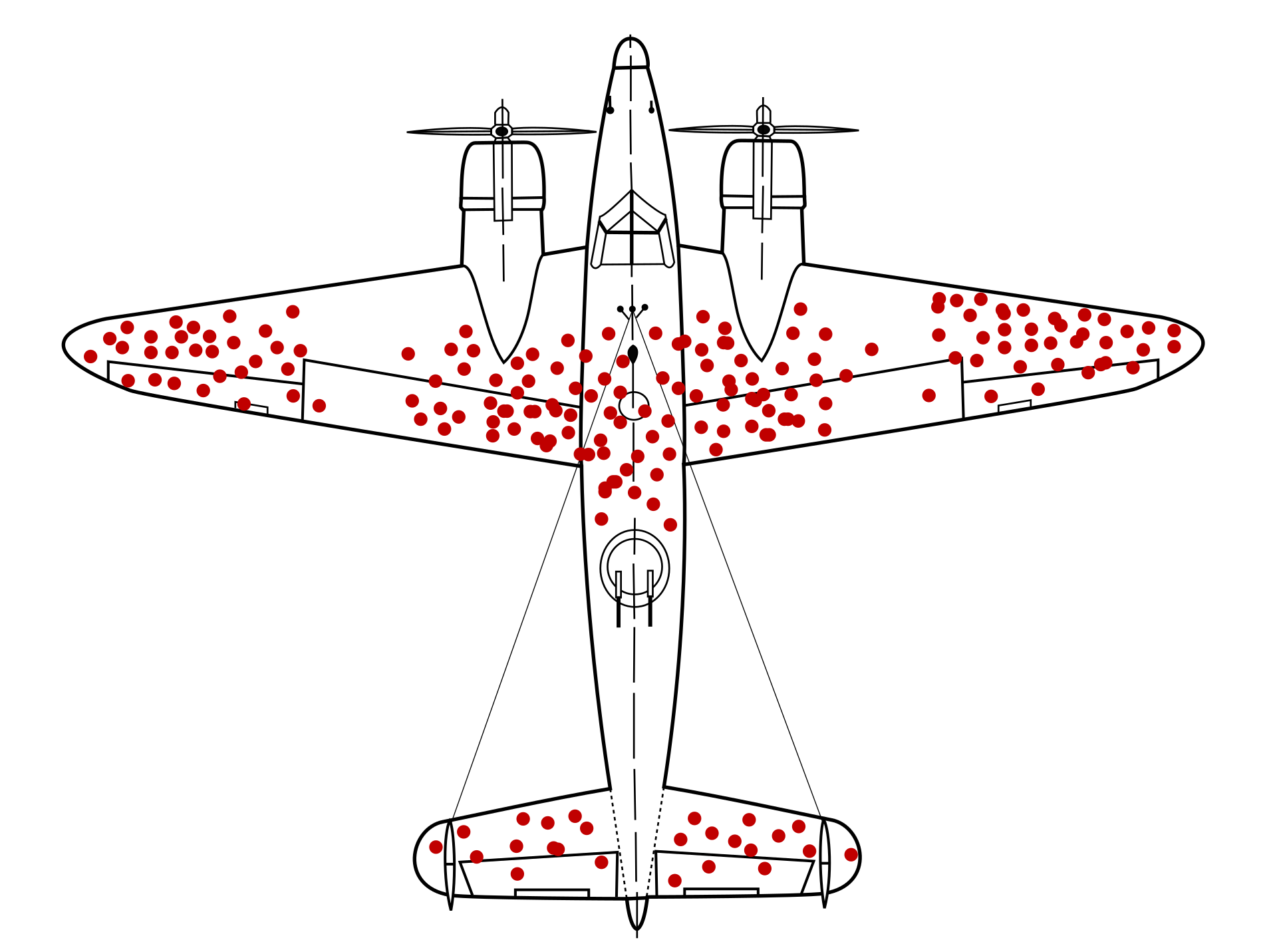
Let's set the record straight: if you've seen this image a bunch of times you have me to blame.
Sometime in the early 2000s I stumbled on the story of Abraham Wald who plotted bullet holes on aircraft returning from battles in WWII. He drew the unusual conclusion to reinforce aircraft not where the bullets were most concentrated but instead least concentrated — the most vulnerable parts that couldn't withstand enemy fire. Here's his full report from 1943.
At the time I was actively speaking at web conferences in the US & Europe on the topic of problem solving among other things, and Wald's story was a terrific demonstration of solving (and defining) the right problem. I wasn't aware of anyone who had visualized this, so sometime around 2005 I hastily plotted fictitious red dots on a poorly-chosen commercial aircraft outline and began including this in slide decks and blog posts.
This later become known as survivorship bias.
Original Diagram
Here's the original artwork created circa 2005:

Clearly the aircraft I chose at the time was not historically accurate. This is probably a commercial cargo plane.
I've received many copyright requests over the years to include the original artwork in books and articles. The image you've seen repeatedly on the socials is from Wikipedia (creator unknown) and is a recreation of my diagram. Look closely in the Wikipedia caption and you'll see me credited.
The next time you see this image pop up in your timeline, throw tomatoes (or thanks) my way.